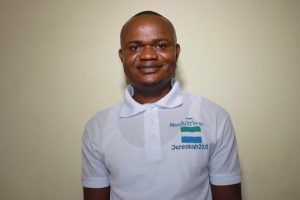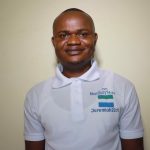March, 2023: Kalangba Junction SLMB Primary School Well Rehabilitation Complete!
We are excited to share that a safe, reliable water point at Kalangba Junction SLMB Primary School in Sierra Leone is now providing clean water to students and neighboring community members! We also conducted hygiene and sanitation training, which focused on healthy practices such as handwashing and using latrines.
"I want to thank [everyone] for the water well they have constructed in my school," said 14-year-old Sinnah, whom we interviewed during our first visit to the school.

Sinnah at the well.
"Before this time, I used to go out of the school to fetch water," Sinnah continued. "I used to boycott the lesson and go out when I [was] thirsty. The teachers [would] always flog me if I did not take a permission [slip] when I wanted to leave the class. Most of the time, I missed [a lot of] lessons due to my absence in class. I was also unable to use the school facilities when there was [a] water crisis. I had no option but to go home and later come back. Also, there was no pure water in this school."

Sinnah collects water.
"I thank [everyone] for the well they have rehabilitated because it will impact my life by solving the problems I stated above," Sinnah concluded. "I will be able to get water without going out of the school premises, there is pure and safe drinking water in the school, and I will no longer walk a long distance to fetch water."
"The problem of water shortage has been affecting me and the school as a whole," said teacher Margaret Sesay.

Margaret celebrates with students.
"I want to thank [you all] for rehabilitating the water well in the school," Margaret continued. "The rehabilitation of this well will make me achieve [a] distinct set of goals. For instance, it will provide safe and pure drinking water for me and the entire school. It will serve sufficient water to the school pupils and staff, and as such, the pupils will no longer go out of the school to fetch water when they are thirsty. I will be able to clean the sanitation facilities that are in the school campus. This goal is vital because it has to do with cleanliness. I cannot be able to achieve this goal if there is no sufficient water in the school, but with the help of the rehabilitation of this well, I will be able to do so."

Margaret and Sinnah at the well.
We held a dedication ceremony to officially hand over the well to the community members. Several local dignitaries attended the ceremony, including representatives from the Port Loko District Council and the local council. Each official gave a short speech thanking everyone who contributed to the rehabilitation of the water project and reminding everyone to take good care of it. Then, Sinnah and Margaret made statements on their community's behalf. The ceremony concluded with celebration, singing, and dancing.

Everyone celebrating the new water source.
Clean Water Restored
The drill team arrived the day before beginning work. They set up camp and unpacked all their tools and supplies to prepare for drilling the next day. The community provided space for the team to store their belongings and meals for the duration of their stay. The following day, the work began.
First, we raised the tripod, the structure we use to hold and maneuver each drilling tool. Next, we measured the well's original depth. We then socketed the pipes and installed a casing.

Finally, we lined up the drill rods and started to drill! We reached a final depth of 15 meters with water at eight meters. The hand-drill method allowed the team to install the cylinder far below the aquifer so that the community has excellent water access throughout the year.
With drilling complete, we installed screening and a filter pack to keep out debris when the water is pumped. We then cemented an iron rod to the well lining and fixed it with an iron collar at the top.

Curious students watch the well's yield test.
Next, we bailed the well by hand for three days and flushed it, clearing any debris generated by the drilling process. Finally, we tested the yield to ensure the well would provide clean water with minimal effort at the pump.
As the project neared completion, we built a new cement platform, walls, and drainage system around the well to seal it off from surface-level contaminants. The drainage system helps to redirect runoff and spilled water to help avoid standing water at the well, which can be uncomfortable and unhygienic and a breeding ground for disease-carrying mosquitoes.

Building the drainage pit that helps prevent standing water.
At last, we installed the pump and conducted a water quality test. The test results showed that this was clean water fit for drinking!

New Knowledge
Before conducting any hygiene training, we called and visited the local water user committee to understand the community’s challenges and lack of sanitation facilities. We shared the findings from our discussions with the committee members to help them make the necessary adjustments before the training began. For example, we identified households without handwashing stations or ones that may need to repair their latrines. With this information, community members worked together to improve hygiene and sanitation at home.
We also invited a nurse from the local clinic to help explain some topics and spread awareness about Sierra Leone's free vaccinations for children under five. She was instrumental in reinforcing each lesson.
After this preparatory period, we scheduled a time when members from each household using the water point could attend a three-day hygiene and sanitation training. We then dispatched our teams to the agreed-upon location to hold the meeting.

Teachers being trained on good hygiene practices.
First, our hygiene team trained the teachers, who then shared the new lessons with the student body with our help.
Training topics covered included handwashing and tippy taps, good and bad hygiene habits, disease transmission and prevention, COVID-19, worms and parasites, dental hygiene, proper care of the well's pump, keeping the water clean, the cost recovery system, dish racks and clotheslines, the importance of toilets, keeping latrines clean, balanced diets, the diarrhea doll, and HIV and AIDS.
One topic that stood out was worms and parasites, which are a common problem in Sierra Leone, especially for children. As the teacher explained the signs and symptoms of parasite infection to his students, one girl named Isatu raised her hand to share a story.

A local nurse showing teachers life-size models of common parasites.
"She narrated how worms affected her by making her stomach become puffy," said our field officer Alimamy. "She did not realize that she had been affected by worms. She was using local herbs for treatment, as she believed that the cause for this puffy stomach was witchcraft. She [kept] using the local herbs for some time, but [with] no improvement. One day, a friend advised her to go to the hospital for medical treatment. She went to the hospital and found out that her system had been [infected] with worms. The doctor advised her to take the full dose of treatment. She took the tablets and started to see improvement in the following days. She finally got recovered after the full treatment, and that was the time she realized that it is important to go [to] the hospital when you feel any symptoms of illness in your body."
Another interesting topic was childhood nutrition, which we demonstrate using a three-legged stool, with each leg representing a vital food group. One student named Mohamed said it would be hard for him to eat enough protein at home since his parents don't allow him to eat fish.

A student demonstrates the concept of a balanced diet.
"Mohamed said his parents [have] never allowed him to eat fish when they are eating together," said Alimamy. "He said his parents believed that fish are meant for elder people, not for children. He said if he attempts to eat fish when he is eating with his father, his father will shout and flog him for attempting to eat fish. His parents believe that any child that loves eating fish is a witch. That is why they are not allowing him to eat fish when they are eating together."
After Mohamed finished his story, our facilitator asked the teachers to tell parents to allow their children to eat fish, eggs, meat, and other proteins to allow them to grow faster. The teachers promised to sensitize the parents on the importance of eating a balanced diet.
Conclusion
This project required a substantial collaboration between our staff, our in-country teams, and the community members themselves. When an issue arises concerning the well, community members are equipped with the necessary skills to rectify the problem and ensure the water point works appropriately. However, if the issue is beyond their capabilities, they can contact their local field officers to assist them.
Also, we will continue to offer them unmatchable support as a part of our monitoring and maintenance program. We walk with each community, problem-solving together when they face challenges with functionality, seasonality, or water quality. Together, all these components help us strive for enduring access to reliable, clean, and safe water for this community.
With your contribution, one more piece has been added to a large puzzle of water projects. In our target areas, we’re working toward complete coverage of reliable, maintained water sources within a 30-minute round trip for each community, household, school, and health center. With this in mind, search through our upcoming projects to see which community you can help next!
Thank you for making all of this possible!

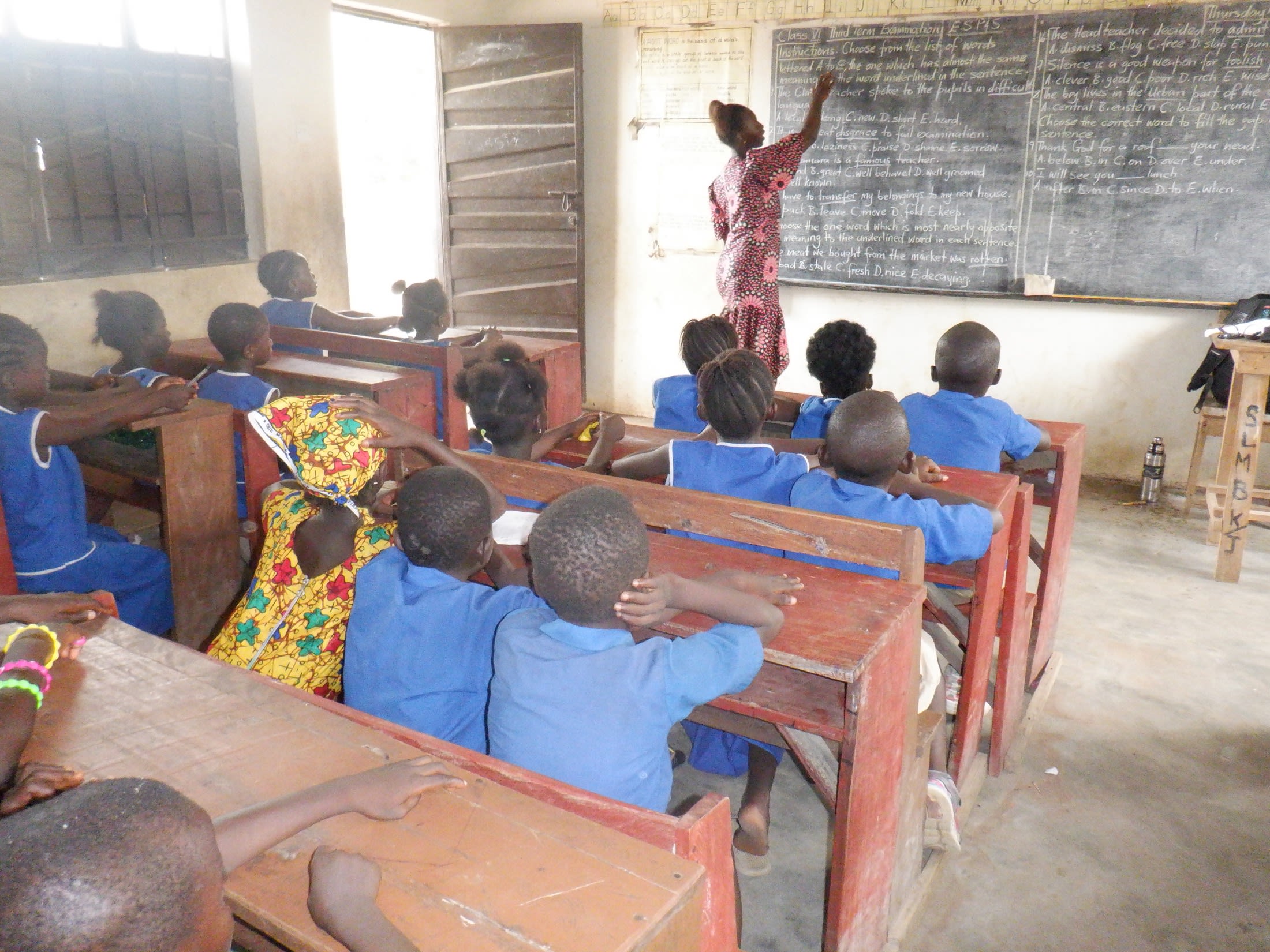
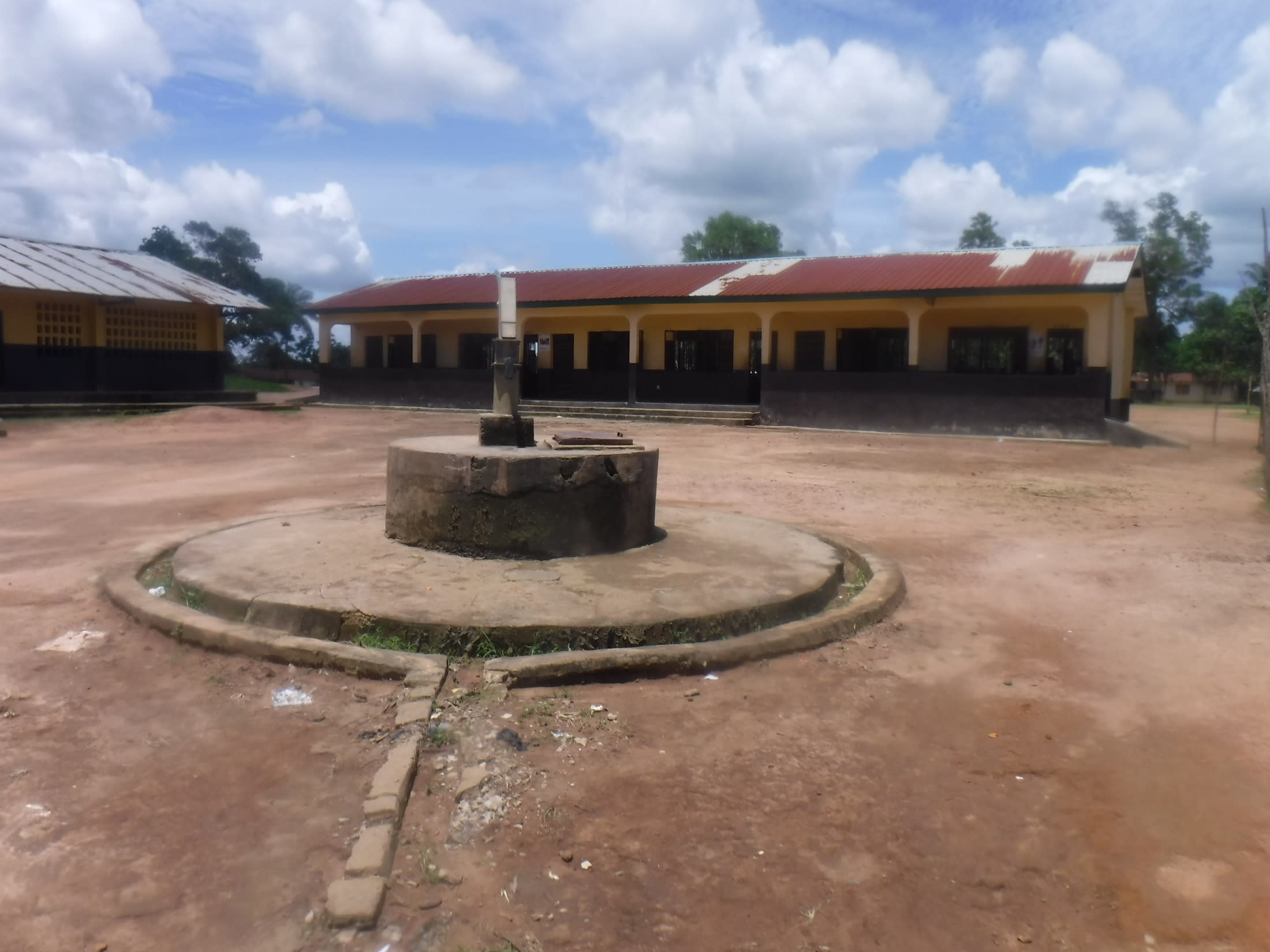
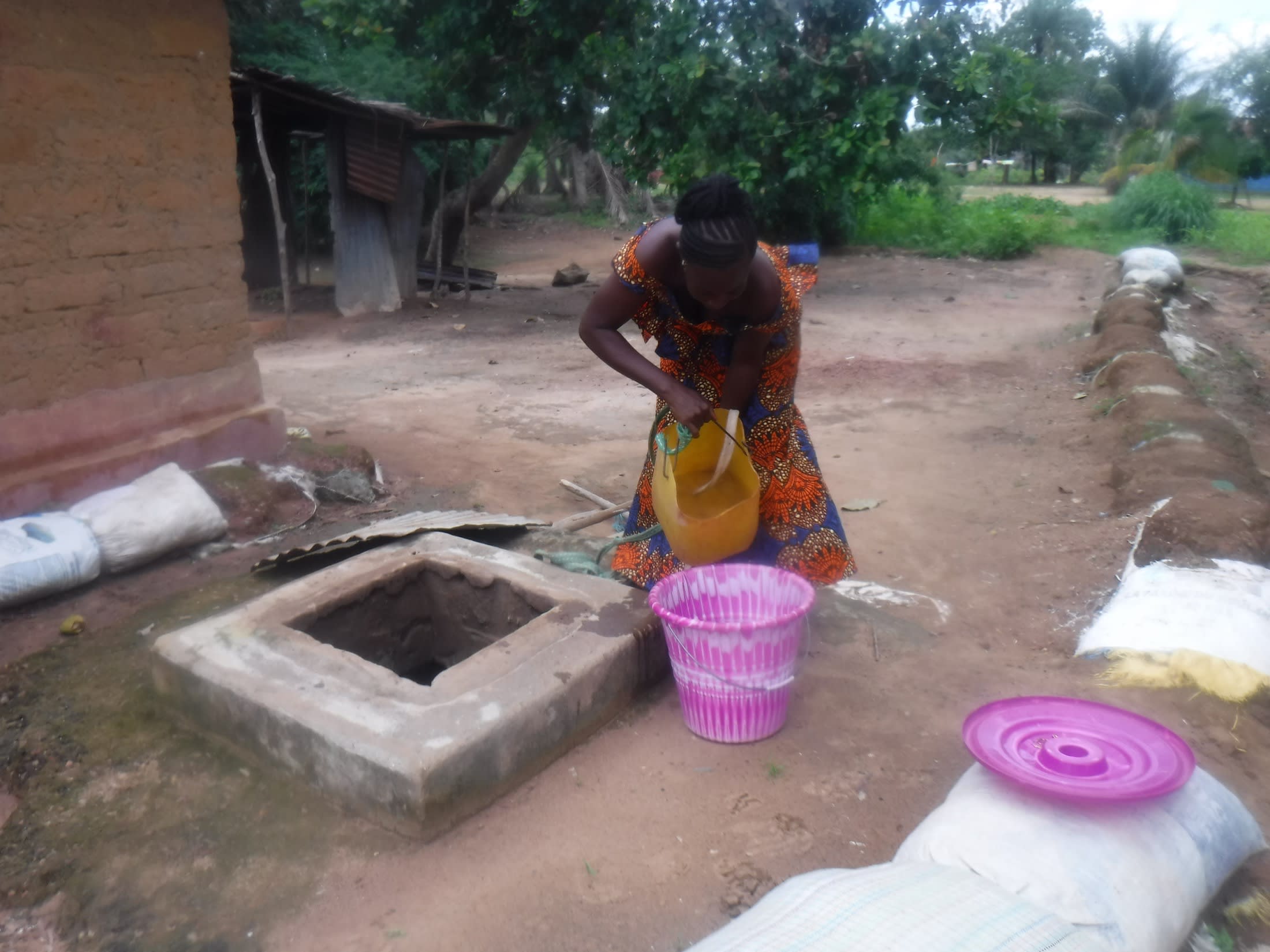
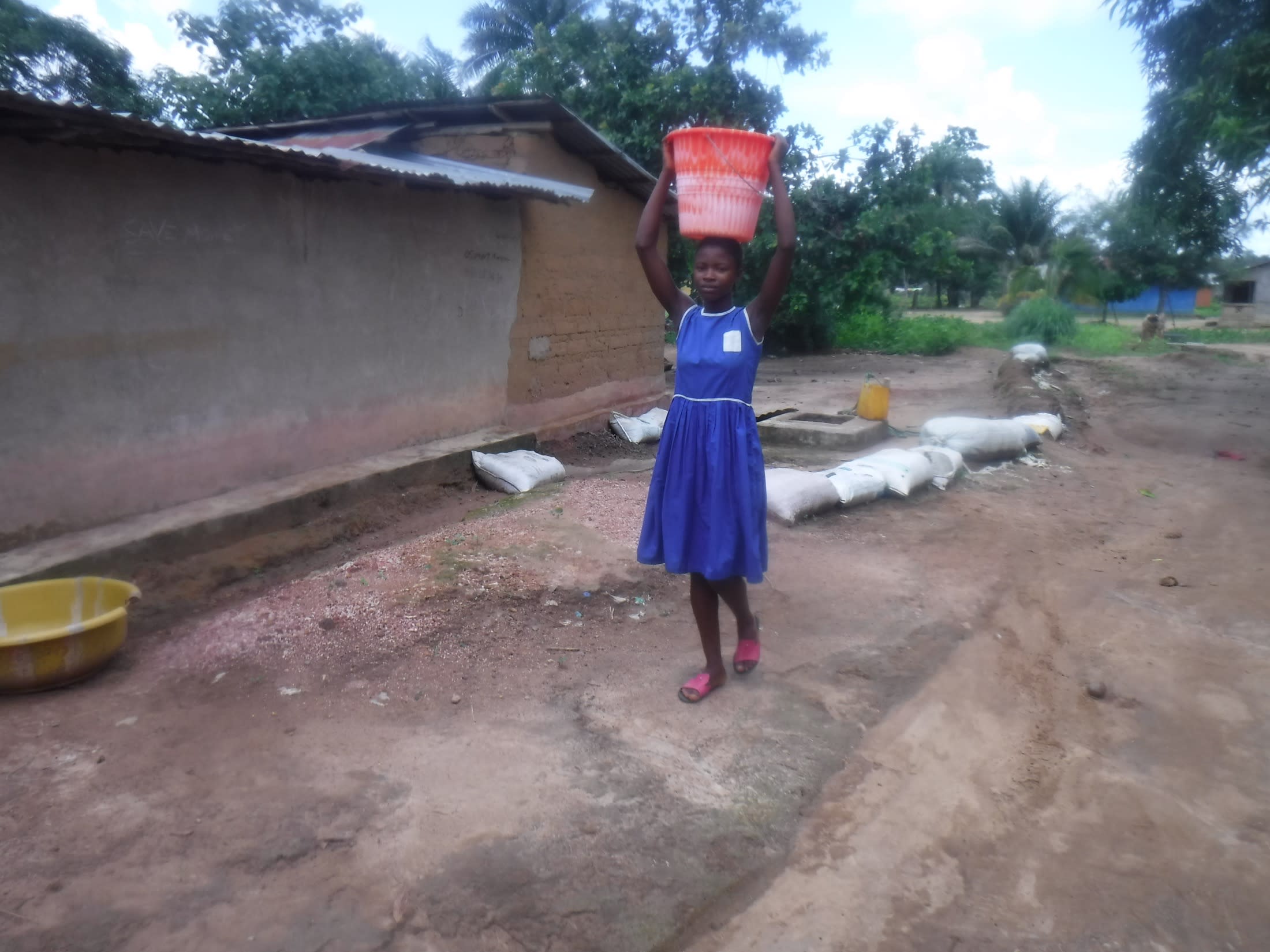

 Borehole Well and Hand Pump
Borehole Well and Hand Pump









